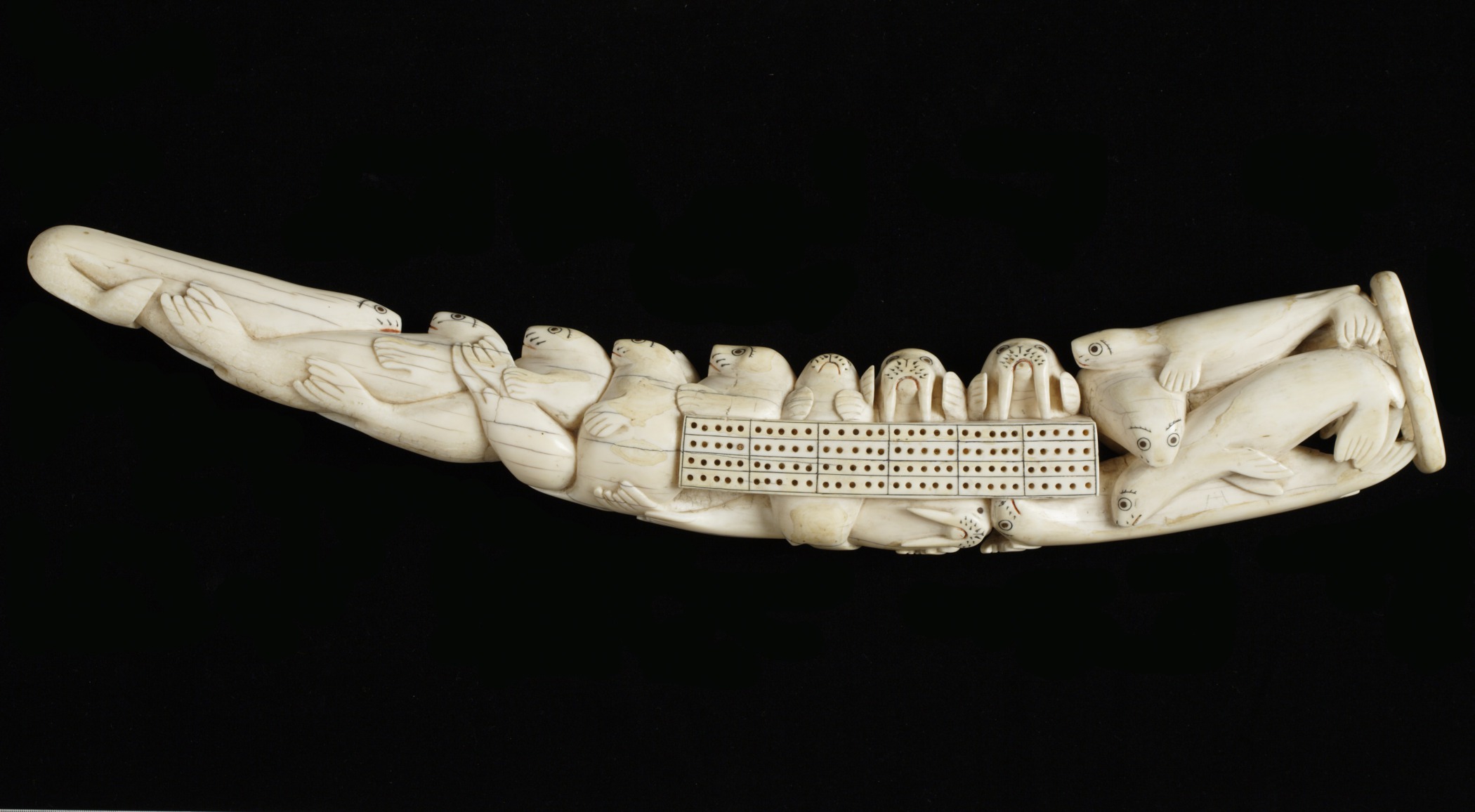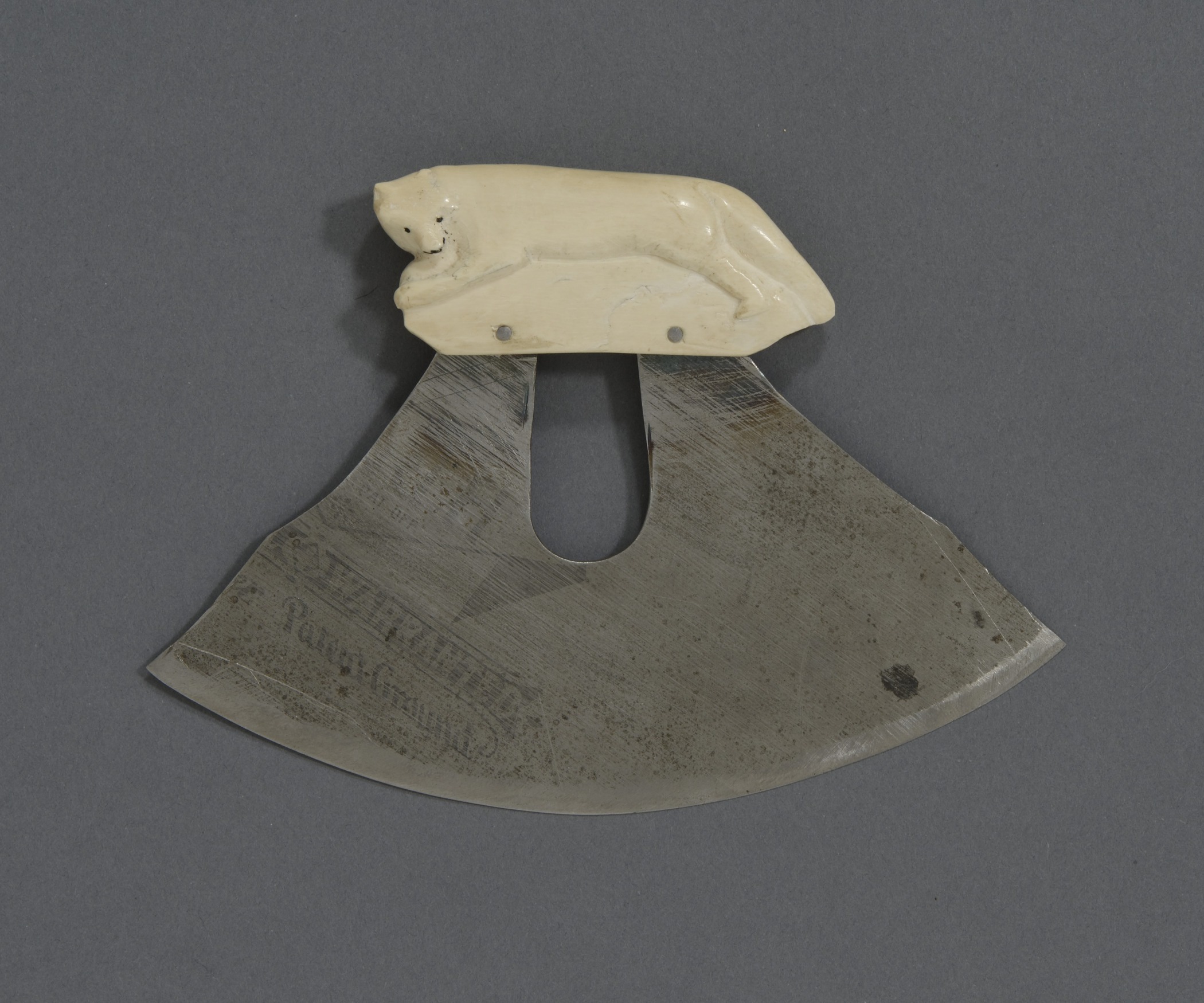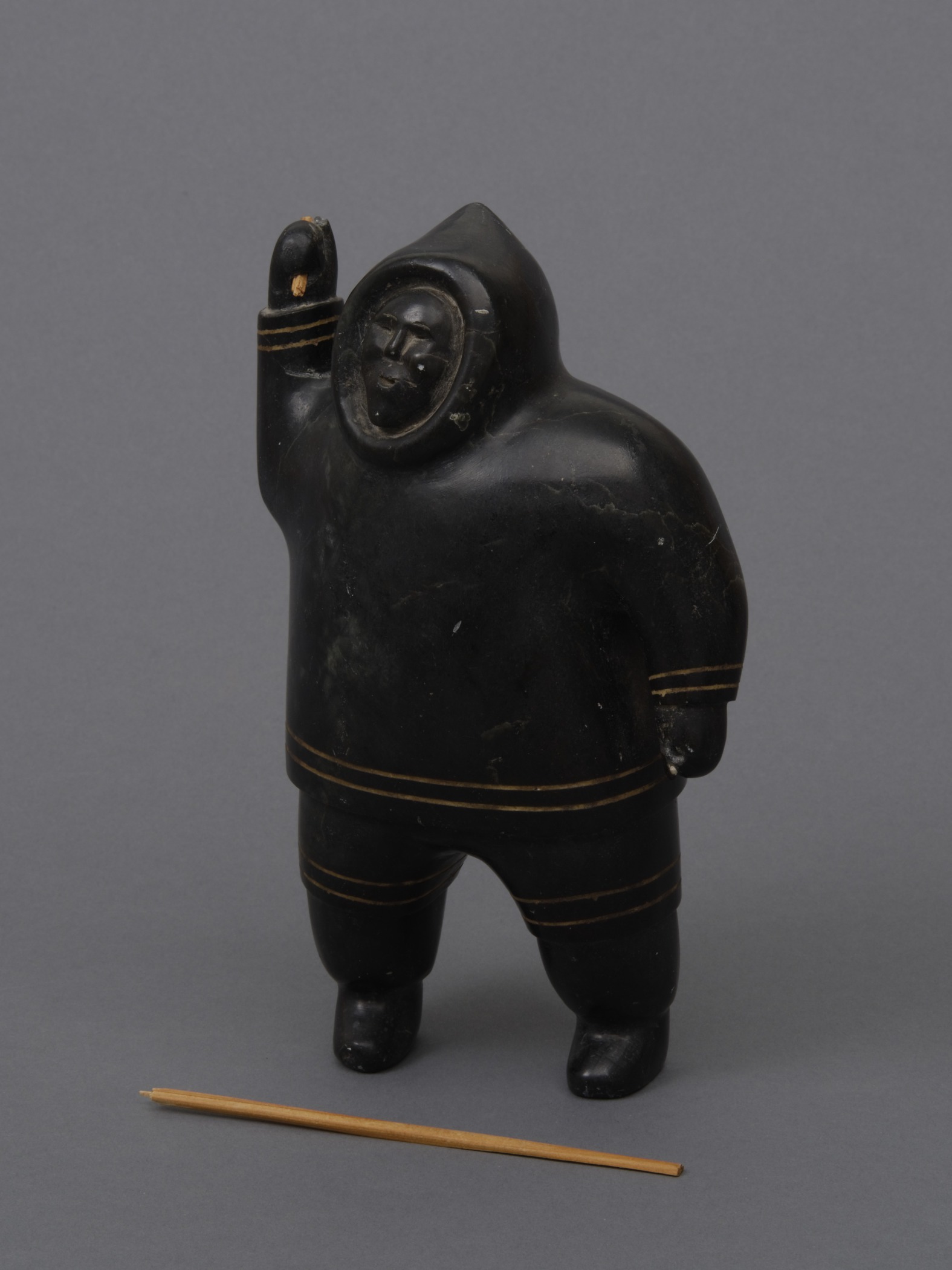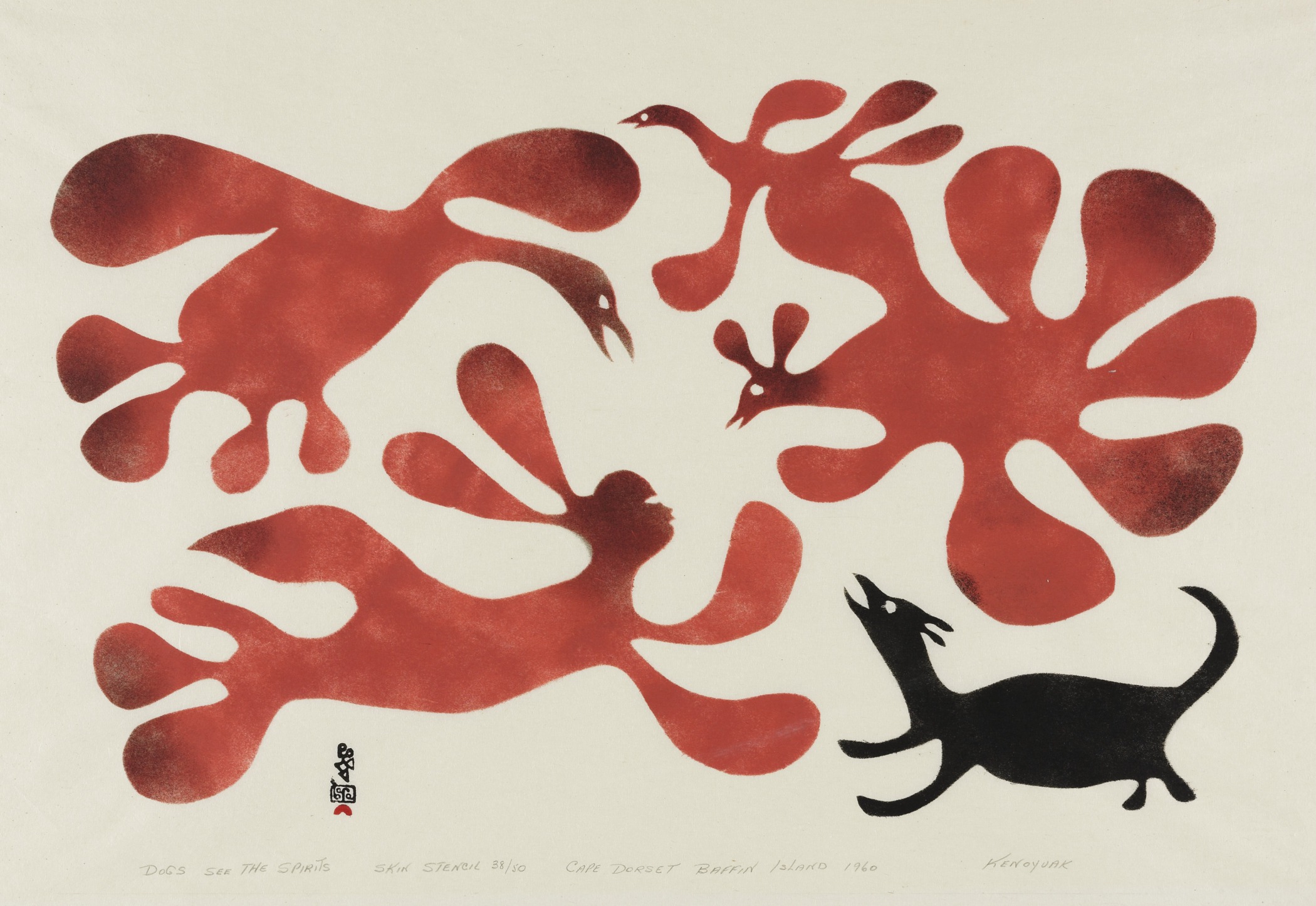Yup’ik
Cribbage board with deep undercut relief sea mammals
- About 1920
- Ivory, wood, graphite, and pigment
- 1 15/16 × 2 15/16 × 20 7/8 in.
Hood Museum of Art, Dartmouth College: Gift of the Estate of Corey Ford, Class of 1921H; 169.75.24892
visibilityLook & DiscussThis cribbage board is one of the most intricately carved and detailed boards in any Canadian or American museum collection. Cribbage was a popular game for European and Russian whalers and traders. A card game for 2 to 4 players, score is kept by inserting pegs into a board.
There is a long tradition of carving in the Arctic. Wood and ivory amulets, tool handles, or miniature toys were historically small and easy to carry. Later, carvings were made for sale to whalers, missionaries, and explorers. Cribbage boards were especially popular, as were scrimshaw—carvings on bone or ivory—depicting scenes of life in the North, and all manner of miniatures. Although these carvings were made for outsiders, they demonstrate the artists’ intimate knowledge of the animals of the Arctic, and are made with the care and attention once paid to sculptures designed to curry favor with the spirits of the animals on which the Inuit depended. They also provided an essential commodity for trade to help indigenous people in the Arctic maintain independence from the outside world.
explore the object
Alaska Native, polished walrus tusk, 20th century. Walrus ivory, 15 1/2 × 1 5/8 in. Hood Museum of Art, Dartmouth College: Transferred from Special Collections, Baker Library, Dartmouth College; 988.34.26953.
The Yup’ik carver who embellished this walrus tusk skilfully overlapped a mass of intertwined sea mammals within the shape of the original tusk. Delicately engraved, black-tinted faces of seals and walruses flank the small cribbage board in the tusk’s center. Carving such an intricate sculpture out of a single tusk required extraordinary skill—and a sense of humor.
Related Objects
Compare a range of styles in ivory cribbage boards and carvings in the Hood Museum of Art’s collection.
Iñupiaq, scrimshaw, about 1900. Bone and graphite, 1 5/8 × 2 15/16 × 1 15/16 in. Hood Museum of Art, Dartmouth College: Bequest of Frank C. and Clara G. Churchill; 46.17.14737.
Scrimshaw is the practice of engraving ivory or bone surfaces with a pointed metal object, and filling those lines with ink or other forms of black pigment. Engraving ivory and tusk, and blacking in the lines (often with a mixture of oil and ash or soot) has been practiced in western Alaska for over 1,500 years, beginning with simple geometric and dot-pattern formations and leading up to the complex scenes of daily life that were popular at the turn of the 20th century. Realistic depictions of landscapes or hunting and whaling scenes on ivory or bone may be centuries old, but this early 20th-century piece is a particularly intriguing example of the detail and accuracy that are possible even on such a small scale. It is only about 2 inches tall and 3 inches wide.
Iñupiaq or Yup’ik, scrimshaw walrus tusk (man pulling a kayak on a sled and walruses), early 20th century. Walrus ivory and pigment, 1 1/4 in. × 16 15/16 × 2 in. Hood Museum of Art, Dartmouth College: Gift of Mrs. A. Lincoln Washburn, Class of 1935W; 160.51.14615.
This walrus tusk has two scenes of everyday life incised into its surface. On one side, walruses sun themselves on the ice. On the other, an Iñupiaq or Yup’ik hunter pulls a kayak on a sled.
Iñupiaq, ivory cribbage board: paired holes with a human head, green leaves, and a seal; reverse: scene of a man with a whip with two dogs, a caribou, and a hunter aiming a bow and arrow at a brown bear and two seals; collected 1905. Walrus ivory engraved with black, red, and green pigment, 13 3/4 × 1 15/16 × 1 3/16 in. Hood Museum of Art, Dartmouth College: Bequest of Frank C. and Clara G. Churchill; 46.17.9690.
When gold was discovered in Nome, Alaska, in 1898, thousands of men arrived seeking their fortune. A market developed for Alaskan souvenirs. Cribbage boards engraved with scenes of everyday life became extremely popular as mementos of Alaskan adventure.
This tusk has a cribbage board on one side, along with a human head and the tail of a seal. The reverse side shows a hunting scene with two hunters, a pair of dogs and a dogsled, a caribou, a brown bear, and two seals.




